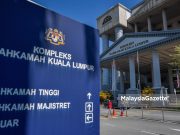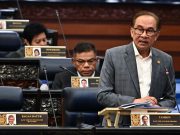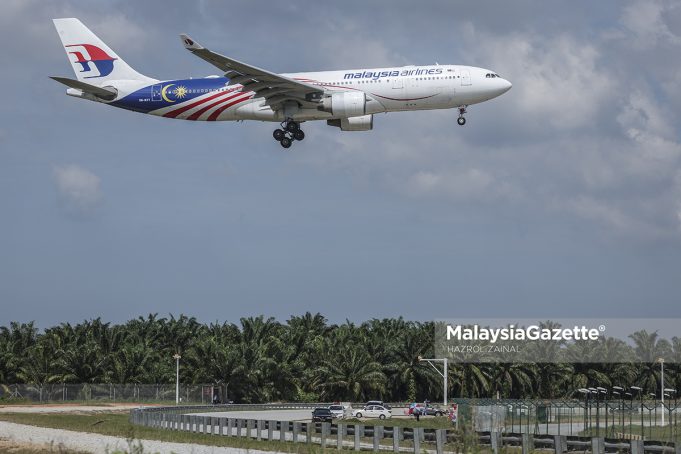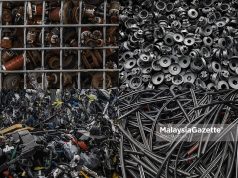The recent mishandling of flights by the national flag carrier airline has certainly created a media uproar. It has begun to highlight how our beloved airline is in critical condition with multiple system failure. While Malaysians bemoan the loss of the Golden Service which was once of national pride and symbol of global competitiveness, we really must introspect about the broader implications of this debacle to the economic standing of our country. An entire ecosystem that helped spur the aviation industry, which included some aerospace assembly activity, has been totally disrupted by very shortsighted policy making and most definitely disruptive governance.
The economic ecosystem in focus includes, not just the flag carrier airline, but also its critical maintenance and repair industry, ground operations which are all housed and supported by the airport and its ancillary operations. This ecosystem also affects the tourism sector and indirectly impinges upon the country’s ability to attract inward investments.
An airline is not merely about a bunch of aircraft that takes you from point A to B. An airline is a multifaceted organisation that involves numerous operations that must be synchronously delivered to ensure customer convenience, delight, and retention. It comprises the aircraft fleet that could be of varying types for different operational requirements and from a multitude of manufacturers to ensure security of supply. It must have a strong ground operation that ensures that it operates on time and without incidence from various airports. It includes an engineering and maintenance operation that operates on international regulatory standards and that ensures the safety of the passengers in additions to that of the pilot crew. It includes a strong flight operation that oversees pilot accreditation and relevance. And it includes a charming and disarming customer service that is visibly evident both on ground and in the air.
But what really distinguishes a national flag carrier airline, along with its superior Golden Service label, is the air network and airport access with timing slots across the globe. This, by far is one of the most painstaking endeavours that requires the airline and the government policy makers to set up in close coordination. This is something that our national carrier and government officials built over decades of hard work from its inception back in 1972.
With all the various building blocks in perspective, we can now appreciate how MAS grew into a global full-service network carrier. It is with the sheer determination of its management team in close collaboration with the government policy makers that this enigmatic symbol of national pride was created.
In addition to this frontline service MAS had also created a superior engineering and maintenance operation that became a global powerhouse for aircraft maintenance talent. Given the numerous aircraft and engine types that were at play, this organisation had built up engineering talent that boasted certifications from 32 global jurisdictions, including that of the US FAA and European EASA. The third-party maintenance services offered by this organisation became a hotly competed for service by other regional airline operations. But MAS held a clear advantage given the readily available technical talent in Malaysia and the acumen of its senior engineering personnel.
The critical mass of aircraft technical talent had helped to initiate the establishment of engineering centres of excellence, that included aircraft engine and component overhaul centres. It further benefited from the global movement of aerospace supply chain resulting in the set up of several assembly facilities in Malaysia. The MAS engineering and maintenance unit had even established a strategic joint venture in India to offer maintenance, repair and overhaul services in one of the fastest growing aviation markets. Needless to say, this indeed was the golden era of aviation in Malaysia.
This strong global network combined with the Golden Service airline as the anchor, Malaysia was in a position to dominate the aviation industry by offering a network of airports across the country with KLIA featuring as a global gateway. KLIA, established far ahead of its regional competitors, became the next symbol of national pride and global prominence. Beyond its unique architecture, its operational excellence and hospitality endured KLIA to become a global hub and a gateway to not just Malaysia, but also to ASEAN.
It is really this strong symbiotic relationship between the anchor flag carrier airline and the airports that gave rise to the establishment of low-cost flying in Malaysia. This, in a sense, was a turning point for the national carrier. Instead of viewing the low-cost flying phenomenon as a boost to the aviation market in Asia and embracing it as a way to upscale itself in the evolving world of aviation services, MAS began to compete with them without properly defining its own value proposition and its own unmistakable market segment leveraging the value of its global network.
With sagging market share and associated profitability, policy makers had reconstituted MAS management with non-aviation personnel with the sole intent to generate quick profits with no foresight or regard to implications to this entire aviation ecosystem. Literal fire-sales of assets, aircraft and disregard of the painstakingly built global network which had huge strategic and monetary value, just to show short term profitability, has resulted in the decay of this entire ecosystem.
Disregard of the global network resulted in MAS losing out on global connections and prime slots into global airport hubs. Sale and downsizing of the fleet resulted in total reduction of fleet types and the relevance of engineering and other technical personnel. Eventually the entire engineering and overhaul operations lost its competitiveness as its personnel were forced to leave for competing service providers who could help upkeep their technical licences and livelihood.
The hubris of the few policy makers and management who purely focused on near term profits led to totally downsizing the anchor flag carrier’s global network and the lack of definition of the type of service offering that could not clearly distinguish itself from that of the low-cost model. This clearly resulted in the loss of passenger delight and loyalty. Furthermore, it also has had a profound impact on KLIA as a global gateway or even a hub for the region with passengers rerouting to neighbouring airports.
It is time Malaysians realise the severe economic fallout caused by the actions of the elite few who profess skills in policy making, shareholder value maximisation and turn-around of ailing public enterprises. While we have begun to witness the operational impact of these actions, the long-term implication is also quite glaring. MAS, once ranked within the top three airlines in the world, is today ranked 39th. KLIA, once ranked as one of the top two airports in the world is today ranked 71st. MAS Engineering and Maintenance unit, once holding 32 global regulatory licenses, today holds just 1 – that too from Malaysia. Clearly this is a total failure of policy execution and governance within public institutions that has caused a disruption to an entire ecosystem for generations to come.
— Ravindran, a former Director in the Performance Management and Delivery Unit, PMO Malaysia oversaw governance and integrity measures. He was also the COO of the Hyderabad International Airport, India and CEO of the MAS-GMR Joint Venture Aircraft Overhaul Centre, Hyderabad. Ravindran had started his career at MAS as a Technical Services and Projects Engineer and has undertaken multiple aviation related consulting assignments across many geographies.

















